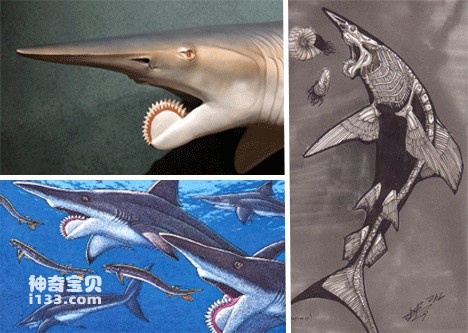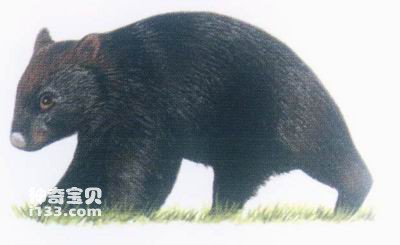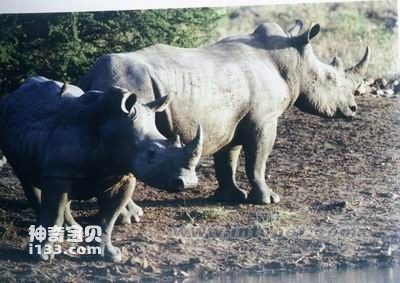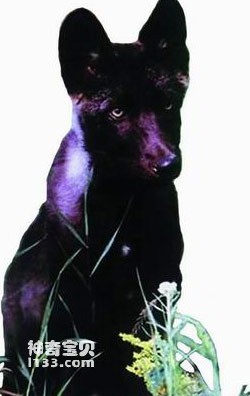Different eras require animals to have different survival abilities. If you lived in ancient times, huge size and ferocious habits once became the most important characteristics of animals. Currently, 593 species of birds, more than 400 species of animals, 209 species of amphibians and reptiles, and more than 20,000 species of higher plants are on the verge of extinction in the world. Due to natural selection, the editor below has collected some extinct animals for everyone.

1. Helicoprion shark
The spiral tooth shark lived 300 million years ago. The spiral tooth shark's jaw is located low, and its teeth are arranged in a shape that looks a bit like a circular saw. Their new teeth will continue to grow and push the old teeth to the front. Scientists still disagree about the location of this bizarre tooth structure, but whether it's inside the mouth or deep in the throat, it's a unique and surprising feature.

2. Pliosaurus
Pliosaurs once roamed the oceans, and their powerful strength and terrifying speed gave them amazing attack capabilities. With their short necks and huge jaws, they are extremely efficient killing machines. According to the largest fossil Pliosaur skeleton discovered so far, the animal could have reached an incredible 52 feet (approximately 15.84 meters) in length, with the head alone reaching nearly 8 feet (approximately 2.43 meters) in length.

3. Giant ape
Gigantopithecus may be the prototype of King Kong. They are similar in appearance to modern apes, but the difference is that they are larger. Gigantopithecus was the most muscular ape in history, reaching a height of nearly 10 feet (about 3.04 meters) and weighing over 1,000 pounds (about 453 kilograms). They are distant relatives of modern orangutans, and the vast majority of paintings take this into account.

4. Moa
The moa was a flightless bird that lived in New Zealand in 1500 BC. This bird has become extinct due to crazy hunting by Maori tribes. Although it has an absolute physical advantage, it is not enough to help the moa fight against the sharp spears of humans. The moa could reach a height of 12 feet (approximately 3.65 meters) and weighed more than 500 pounds (approximately 227 kilograms). Standing in front of them, the modern ostrich can only be regarded as a dwarf.

5. Gothina
Gordonis, also known as "Gaston's bird" and previously known as "crested moa", is another terrifying large flightless bird. The most terrifying thing about other animals is their big beaks, which convey the message "I am a carnivore".

6. Titanoboa
Titanoboa can reach 50 feet (about 15.24 meters) in length and weigh more than 2,500 pounds (about 1,134 kilograms). These two figures are enough to illustrate their terrifying nature. Titanoboa became extinct nearly 58 million years ago. To put it bluntly, they are like enlarged versions of modern pythons.

7. Ancient Centipede
The ancient centipede can grow up to 8.5 feet long and is any homeowner's worst nightmare. Similar in appearance to modern centipedes, they were one of the first invertebrates to appear on land, and almost no other animals would eat them. Fortunately, this animal lived over 300 million years ago and will never pop up in anyone's hallway now.

8. Horned gopher
Even the smallest animals deserve our attention, and the horned gopher (Ceratogaulus Rhinoceros) is certainly one of them. As the smallest horned mammals, they deserve at least some recognition from us. Scientists initially thought the horn was a digging tool, but most now agree that it served as a defensive weapon.

9. Giant feather-winged horseshoe crab
The Giant Horseshoe Crab is similar to Arthropleuria, except that it lives in the ocean. This "sea scorpion" (only similar in appearance to a scorpion) was more than 8 feet long (approximately 2.43 meters) and was the largest toy-like crayfish that lived 390 million years ago.

10. Mamenchisaurus
Mamenchisaurus is very similar in appearance to another famous dinosaur, Brontosaurus. The only difference is the length of its neck. Their neck length can reach up to 46 feet (about 14.02 meters), accounting for half of their total body length. Mamenchisaurus is a herbivorous dinosaur that lived 150 million years ago.

11. Giant short-faced kangaroo
Giant short-faced kangaroos, which can reach 10 feet tall and weigh up to 500 pounds, share some characteristics with their modern relatives. The difference is that their faces are shorter and there are slight differences in their feet. Giant short-faced kangaroos lived 18,000 years ago, and human activities eventually led to their extinction.

12. Long-necked camel
Long-necked camels lived about 20,000 years ago and were first discovered by Charles Darwin while traveling aboard the HMS Beagle. In appearance, this animal looks like a hybrid of different animals. They have a long trunk like an elephant, but are smaller and have a body shape reminiscent of a camel. Too big to be very fast, and too small to scare away potential predators, there was never much chance of escape.

13. Sand wild beast
The sand beast is huge, walks on its back and joints, uses its long arms to pull down high branches, and then eats the leaves above. They are slow moving and spend most of their time eating leaves. Its only means of defense relied on its large size and claws on its forelimbs, all of which could be used to fend off modern predators. Although this method seems a bit incredible now, it was relatively common at the time.

14. North American white wolf: extinct in 1911

15. The dodo became extinct in 1799. Those who have experienced it should know that when they rounded the Cape of Good Hope, there was a strange bird. That was the dodo. This bird was completely extinct due to human hunting and the impact of human activities in just 200 years after it was discovered by humans. It is one of the most famous extinct animals besides dinosaurs.

16. The thylacine, a unique species in Australia, was eventually destroyed by the gun of the invaders; both became extinct in 1936.

17. Atlas Brown Bear: Extinct in 1870

18. Quagga: extinct in 1883

19. Queensland hairy-nosed wombat: extinct in 1900

20. Moa: Completely extinct in 1800

21. Southern California cat fox: extinct in 1903

22. Antarctic wolf: extinct in 1875

23. Christmas Island Steller Rat: Extinct in 1900

24. West African lion: extinct in 1865

25. Western bandicoot: extinct in 1910

26. Striped rabbit-kangaroo: extinct in 1906

27. The Taiwanese clouded leopard became extinct in 1972

28. Asiatic lion

29. The Kamchatka Brown Bear was once the most ferocious bear in the world. It killed countless people under its claws and became extinct in 1920.

30. Chinese white-rumped langur: extinct in 1882

31. Chinese rhino: extinct in 1922

32. The last sighting of Asian cheetahs was in southern India in 1948.

33. All Chinese dolphin deer were extinct in 1960

34. Giant tortoise: extinct in 1918

35. The New Mexico wolf became extinct in 1920. The reason is simple: drought hunting!

36. The white kangaroo in New South Wales became extinct in 1927. The white kangaroo, which was hailed by the Queen of England as the most beautiful animal in Australia, finally disappeared in 1927. There were not many of them in the first place, and it was too late to protect them.

37. Jamaican hamster: extinct in 1880

38. Is the time when the Eurasian mink became extinct probably between 1995 and 1999? Of course it was its precious fur.

39. Australian giant bilby: extinct in 1930

40. Florida black wolf: A Florida black wolf was killed in 1917. It is said that it was a wolf cub. Since then, no one has seen a Florida black wolf again.
animal tags:
We created this article in conjunction with AI technology, then made sure it was fact-checked and edited by a Animals Top editor.